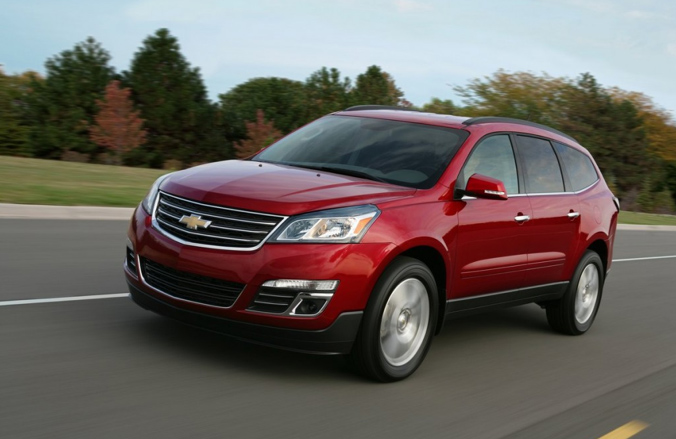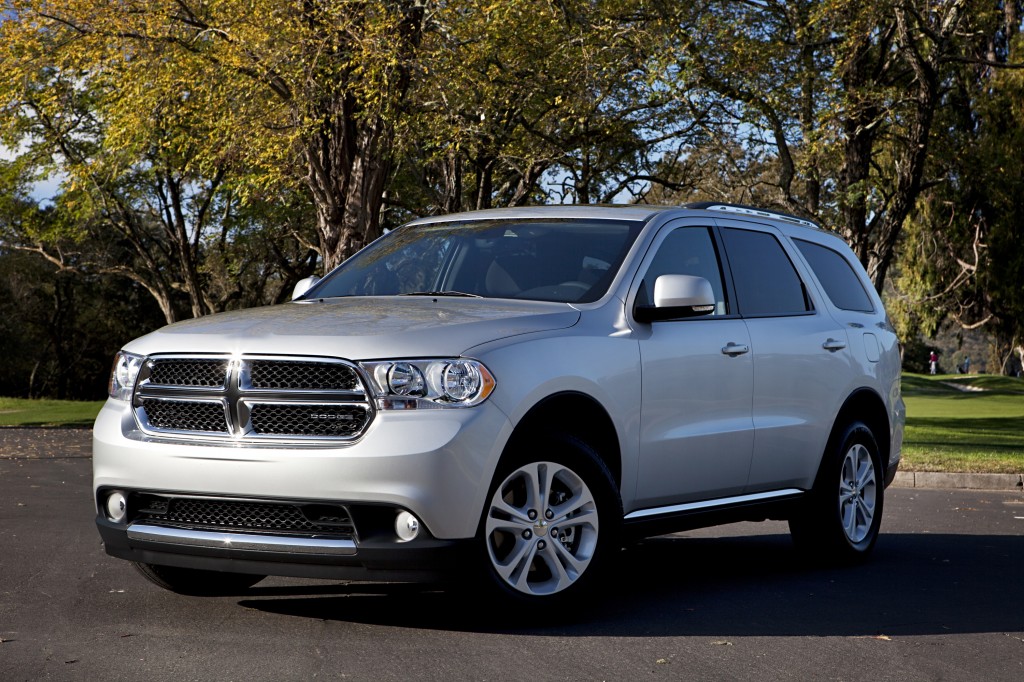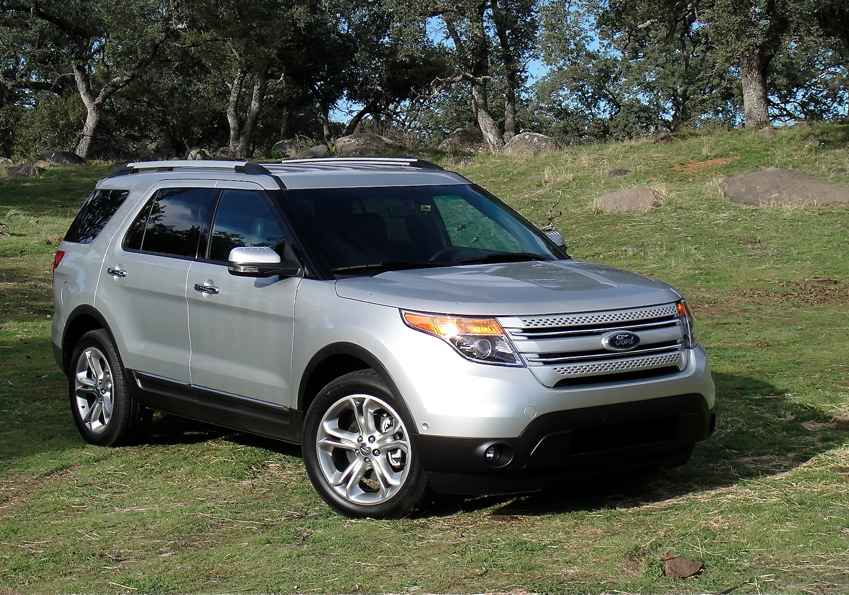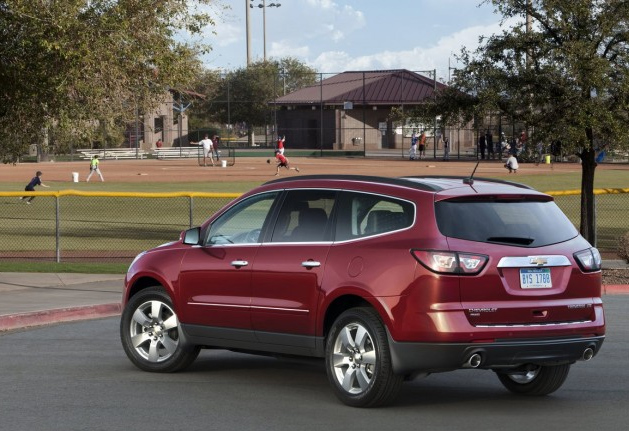Dear John: Domestic three-row crossovers
Story by John LeBlanc
Loyalty is becoming a rare quality with consumers these days, especially as new car buyers are faced with more choices than ever before when it comes to brands and models. But not so with this month’s Dear John letter writer.
Doug Caruthers, of Barrie, Ont., wrote in asking for advice on a new vehicle to replace his four-year-old Chevrolet Tahoe, an SUV that’s done yeoman service for the Ontario government employee as both summer transportation to his family cottage on Lake Simcoe and as a winter hauler of the young hockey players he’s coached for more than a decade.
Doug has had few complaints with his 2010 Tahoe. He opted for the three-row, seven-seat version for chauffeuring his sons and their teammates to hockey games and practices. In addition, Doug also liked the added traction of his Chevy SUV’s all-wheel-drive for winter driving trips to tournaments and hauling his boat to the cottage.
Doug’s also been happy with his local Chevrolet dealer — in fact, this is the third Tahoe he’s owned. But after selling his boat this past summer, he no longer needs the Tahoe’s generous towing capacity, and is looking for a roomier and more fuel-efficient three-row crossover as a replacement.
“I don’t need a V8,” Doug wrote. “But I don’t know if I can get away with only a four-banger.”
As for a budget, the Barrie resident is being realistic. “It would be great if I could keep it under $45,000.” However, Doug’s success with the Tahoe means he’s strictly a “Big Three” buyer, and “won’t even look at anything with an import badge on it.”
Luckily for this Dear John letter writer, all three Detroit automakers offer a vehicle in his range, in the form of the Chevrolet Traverse/GMC Acadia, Dodge Durango and Ford Explorer. And the segment is super competitive. The differences between all three of these up-to-eight seaters are razor-thin.
Opting for all-wheel-drive (the Chevrolet/GMC and Ford start as front drivers) leaves me recommending the 2014 Chevrolet Traverse 1LT AWD, 2013 Dodge Durango SXT and 2014 Ford Explorer XLT 4WD. All offer six-cylinder gas engines, ranging in displacement from 3.5 litres in the Ford to 3.6 in the Chevy and Dodge. The horsepower ratings are equally tight: 281 hp in the Traverse and 290 in the Durango and Explorer. Torque is also competitive, with the Ford offering the least at 255 pound-feet, the Dodge at 260 and the Chevrolet at 266.
With all three crossovers weighing in around 2,200 kilograms, it’s also no surprise fuel-economy estimates are nearly equal as well. City projections for all three range from 12.5 L/100 km to 13.0, and highway estimates range between 8.6 and 8.8. And pricing is almost identical, too. Including freight and pre-delivery fees, the Traverse 1LT AWD costs $40,995, the Durango SXT $40,990 and the Explorer XLT 4WD $41,014.
So, Doug, I could wuss out right now and write something like, “All three would make a great choice! Happy trails!” But that’s not how it works here at Dear John. So let’s go straight to the elimination round.
If not for the Dodge’s lack of rear space (its tighter rear quarters means it offers only 490 litres of cabin space aft of its third row seats), the Durango SXT would be my top choice for you, Doug.
In the city or beyond, the Durango feels more luxurious, solid, quiet and composed than either of its domestic rivals. Based on the same platform as the upscale Mercedes-Benz GL-Class, the Dodge offers tighter fit-and-finish and higher-quality cabin materials than its domestic brand rivals. Its long wheelbase smothers road imperfections. Another highlight is the Durango’s steering, which delivers real, live feedback from the road. And the Durango is like a freight train on the highway, with arrow-straight directional stability at higher speeds.
If only the Dodge had more room in the back. But that’s not a problem the Ford Explorer XLT 4WD suffers from.
Despite the shift to crossover status, the Explorer is still one of the largest utility vehicles you can buy today, with 594 L of space behind its rear seats. Although it’s hardly Rubicon Trail-ready, the Explorer has plenty of ground clearance for unplowed Ontario winter roads. In place of the traditional transfer case knob, 4WD models get a Terrain Management system. Via a console-mounted dial, drivers can select one of three settings (sand, snow, mud) with a default mode for pavement.
The main reason the Ford crossover doesn’t get my recommendation is its sheer size. Its girth makes the Explorer something of a challenge in tight spots, and rearward visibility is challenging. Plus, while on paper the V6 is competitive, it sounds over-stressed when called upon.
Which leaves us with one option, Doug: buying another Chevrolet — this time the Traverse. Of the trio here, its 691 L of space behind its rear seats makes it the roomiest by far — and with an interior that’s better built than the Ford. And a mid-life refresh for 2014 means the Chevy crossover drives almost as well as the Dodge. With new springs upfront, the Traverse rolls less in the corners. And its old school hydraulic steering helps make the large vehicle more accurate to place on the road.
Finally, Doug, if you head back to your local Chevy dealer, I suspect they may offer a discount for being such a loyal customer.
If you’re in the market for a new car, and would like to be the subject of a Dear John consultation, please contact John LeBlanc at editors@straight-six.com.









![[del.icio.us]](https://www.straight-six.com/wp-content/plugins/bookmarkify/delicious.png)
![[Digg]](https://www.straight-six.com/wp-content/plugins/bookmarkify/digg.png)
![[Facebook]](https://www.straight-six.com/wp-content/plugins/bookmarkify/facebook.png)
![[Google]](https://www.straight-six.com/wp-content/plugins/bookmarkify/google.png)
![[Reddit]](https://www.straight-six.com/wp-content/plugins/bookmarkify/reddit.png)
![[StumbleUpon]](https://www.straight-six.com/wp-content/plugins/bookmarkify/stumbleupon.png)
![[Twitter]](https://www.straight-six.com/wp-content/plugins/bookmarkify/twitter.png)
![[Email]](https://www.straight-six.com/wp-content/plugins/bookmarkify/email.png)